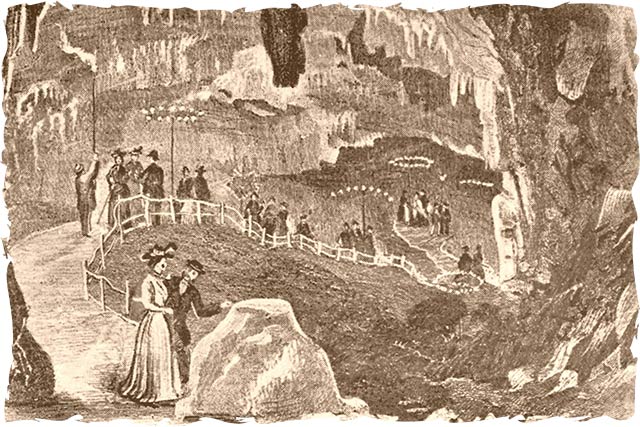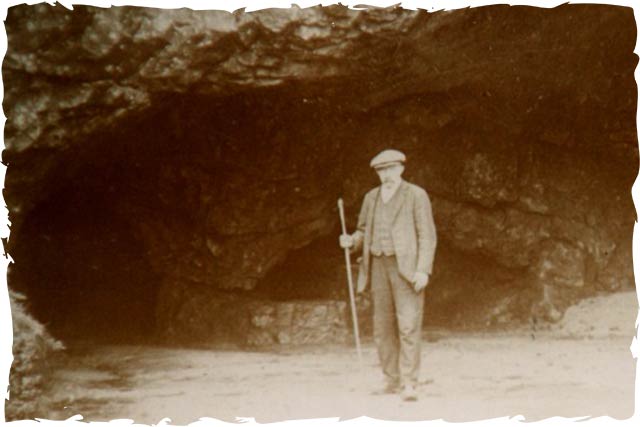
Poole's Cavern was attracting the attention of curious adventurers as early as the 16th century. Mary Stuart, Queen of Scots is said to have visited in 1582; and in 1681 the writer Charles Cotton listed the cave as one of his seven 'Wonders of the Peak', bringing a new-found fame to the cavern.
The polite and erudite individual who leads you through Poole's Cavern today comes from a long line of dedicated tour guides. Unfortunately, not all the guides in the Cavern's history have followed the same brand of dedication. The first mention of the job comes late in the 18th Century when local cottage tenants - 'grasping and fighting for payment', according to reportage in 1797 - followed a loose code of extortion and terror to make a visitor's day nothing if not memorable. Escorting unwitting tourists into the bowels of the cave, those canny individuals would sometimes threaten to extinguish their candles and run away, unless more money was forthcoming.
Following this general tone of skullduggery, visitors were at liberty to hurl rocks at cave formations, and some of their handiwork can be observed today - notably the truncated stalactite known as 'The Flitch of Bacon', and the damaged underside of the feature known as Poole's Chair.
The land surrounding Grin Low was part of the vast estates of Chatsworth. The 5th Duke of Devonshire created a model Spa resort to rival Bath. Water from the famous warm springs were piped to the new bath houses in the Georgian Crescent in Buxton. The 6th Duke planted many of the Buxton woodlands and opened public parks within the town.In 1853 the 6th Duke appointed Mr Frank Redfern as the cavern's first official custodian,and the cavern was officially opened as an added attraction for visitors to the growing Spa resort.

Entry into the cavern had always been difficult. Glacial sediment at the entrance passage combined with a low rocky roof to necessitate an uncomfortable 10 metre crawl into the cave's first chamber. Frank Redfern enlarged the cavern entrance by removing tones of sediment and blasting away the low roof space. The cavern pathways were levelled to accommodate bath chairs. Stairs and hand rails were installed and the path was extended to allow access to a further chamber.
The cavern was to remain under the custodianship of the Redfern family for the next 120 years. The Victorian Poole's Cavern boasted a bandstand, museum, monkey house and formal gardens walks. A pioneer, Frank was also responsible for the cave's first lighting system - a series of huge candelabra.

In 1859 the candelabra were replace by a series of 17 gas lamps, a revolutionary idea in show caves at that time. The legacy of these lamps can be seen throughout Poole's Cavern in the form of rusted gas pipes and the curiously beautiful speckled patterns of soot deposits on the walls and roof.
Surprisingly, the gas lamps were still glowing in 1965 when, following the death of Mr. Lesley Alcock (husband of Frank Redfern's grand daughter Jessie Alcock - owner of the cavern since 1955), the show cave closed down. Phoenix-like, it re-opened in 1976 after the new owners Buxton & District Civic Association - had installed 100 electric lights under the supervision of long-serving warden Mr. David Allsop.
All of which is but the blinking of an eye on the geological timescale. But the history of the showcave does not end there. It appears Poole's Cavern has several more underground secrets to reveal. The discovery of new caves at the end of the Sculpture Chamber suggests that future visitors may one day be able to extend their subterranean tour even further.






